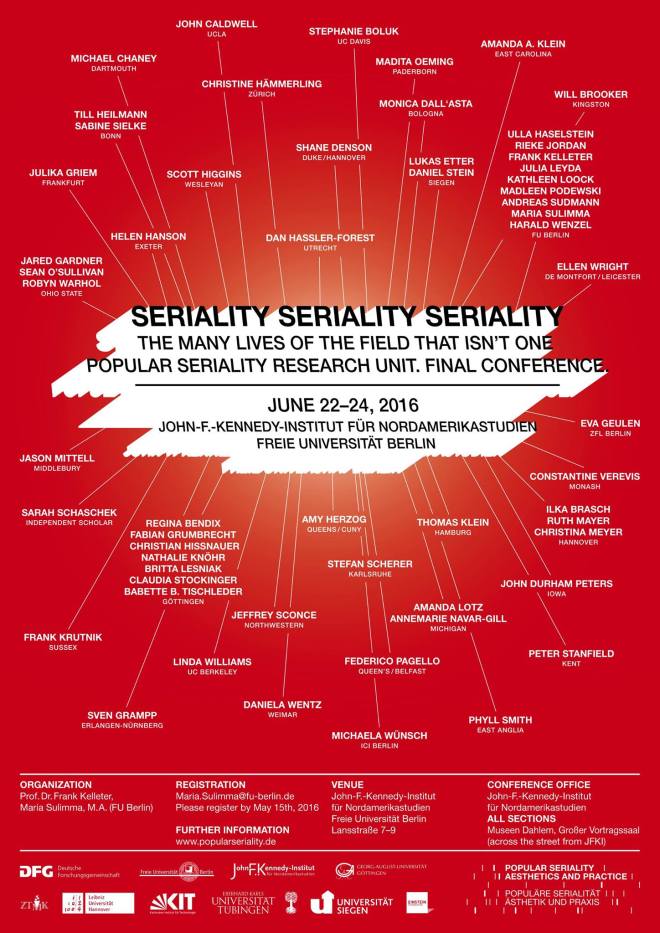Ludic Operations: Play and the Serial Action Sequence
Scott Higgins (Wesleyan University)
In “Digital Seriality: On the Serial Aesthetics and Practice of Digital Games,” Shane Denson and Andreas Jahn-Sudmann call for “a serious consideration of both the specificities of game-based serialities and the common ground they share with other media-cultural practices and aesthetic forms.” This essay heeds that call, albeit in reverse. If the concept of play can illuminate serial qualities of digital games, then perhaps analog serial forms should be regarded in terms of their ludic potentials. In particular, the concept of operational aesthetics connects the Hollywood sound serial and the contemporary action film to the kind of spatial, physical, problem solving basic to many digital games.
Tom Gunning brought the concept of “operational aesthetics” to film studies from Neil Harris’ study of P.T. Barnum. For Gunning, the term describes an essential fascination with seeing systems at work, “visualizing cause and effect through the image of the machine.” While Gunning traces this pleasure to early gag films and slapstick comedy, which he sees as at odds with studio-era plotting, the sound serial’s weekly death traps and infernal machines give pride of place to similar processes. Cliffhangers are physical traps with clear procedural boundaries: story potential is embedded within concrete mechanisms. The best cliffhangers achieved such visual and spatial clarity that viewers might feel something like a gamers’ agency, tracing out potential outcomes. In their design of narrative space, and their obsession with physical process, cliffhangers prefigure the fully ludic architectures of digital games. Similarly, Lisa Purse proposes that the contemporary action genre enacts a “fantasy of spatial mastery,” an embodied experience of overcoming physical constraints and boundaries. From Bond to Raiders to the Marvel franchises, action films have inherited the serial’s operational logic, placing inhabitable characters in diagrammatically vivid problem spaces.
My paper explores the operational action sequence as a form of ludic narrative, drawing examples from Captain Midnight, Raiders of the Lost Ark, and Guardians of the Galaxy. As transmedial action properties, both serials and blockbusters maintain a direct connection to the culture of play via seriality’s interrupted continuity. Operational aesthetics forms a bridge between story and game. I hope this research will help embolden the field to pursue the ludology of film narrative.
Bibliography:
Denson Shane, and Andreas Jahn-Sudmann. “Digital Seriality: On the Serial Aesthetics and Practice of Digital Games.” Eludamos: Journal for Computer Game Culture 7.1 (2013): 1-32..
Gunning, Tom. “Crazy Machines in the Garden of Forking Paths.” Classical Hollywood Comedy. Eds. Kristine Brunovska Karnick and Henry Jenkins. New York: Routledge, 1995. 87-105.
Juul, Jesper. Half-Real: Video Games between Real Rules and Fictional Worlds. Cambridge, MA: MIT Press, 2005.
Murray, Janet. “From Game-Story to Cyberdrama.” First Person: New Media as Story, Performance, and Game. Eds. Noah Wardrip-Fruin and Pat Harrigan. Cambridge MA: MIT Press, 2004. 2-11.
Purse, Lisa. Contemporary Action Cinema. Edinburgh: Edinburgh UP, 2011.
Author Bio:
Scott Higgins is associate professor and chair of film studies at Wesleyan University. His interests include genre, narrative theory, film aesthetics, and technology. His first book, entitled Harnessing the Technicolor Rainbow, is published by the University of Texas Press. His second is the edited volume Arnheim for Film and Media Studies, published by Routledge. He is working on a manuscript about sound serials of the 1930s-1950s.

